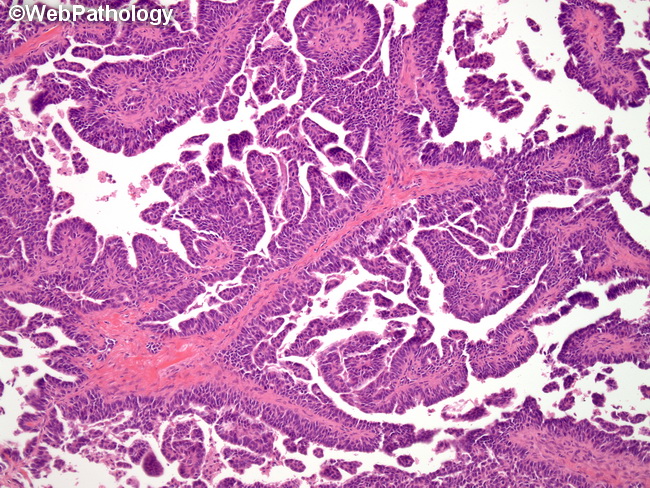High-grade Serous Carcinoma : Presentation


Comments:
High-grade serous carcinoma is the most common type of ovarian cancer accounting for almost 70% of cases. It is a disease of peri- and postmenopausal women and is most frequently diagnosed in the 6th and 7th decades of life. About 15% of women with this cancer have germline mutations in BRCA1 or BRCA2. About 40%-50% of cases show serous tubal intraepithelial carcinoma in distal fallopian tube. Most ovarian cancers are non-functional and clinically silent or cause vague and non-specific symptoms until they reach large size. Symptoms include abdominal pain, pelvic discomfort, a sensation of abdominal fullness, pressure or distension (due to ascites), urinary obstruction (due to ureter involvement), intestinal obstruction, and vaginal bleeding. Tumors may undergo torsion and produce acute abdominal pain. Most cases (60%) present at advanced stages with intraabdominal metastases. Papillary growth is usually the predominant pattern and is at least focally present. The papillae are architecturally complex, show hierarchical branching, have true fibrovascular cores and are lined by pseudostratified tumor cells. By definition, stromal invasion is present which separates them from serous borderline tumors.



